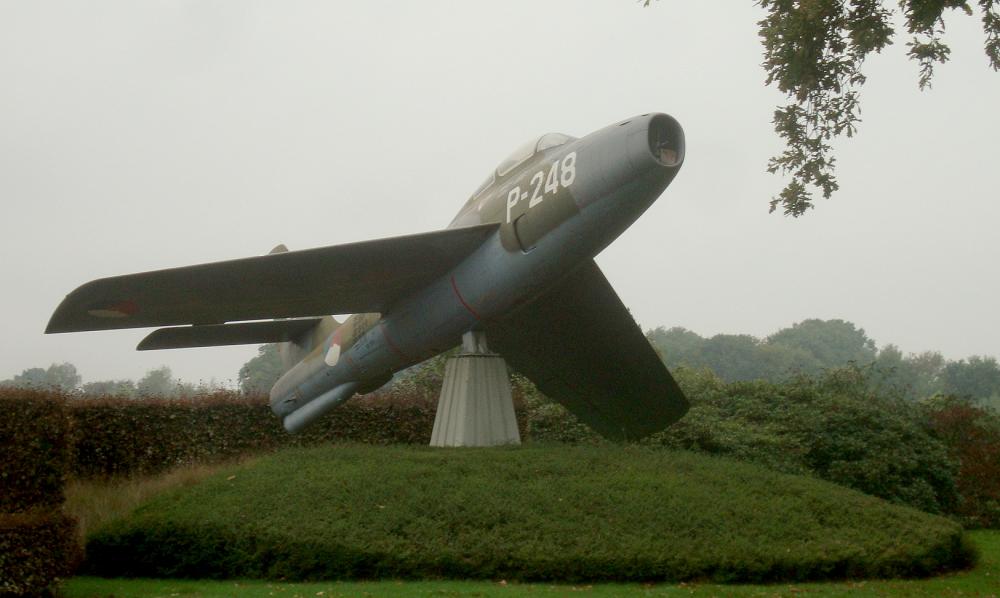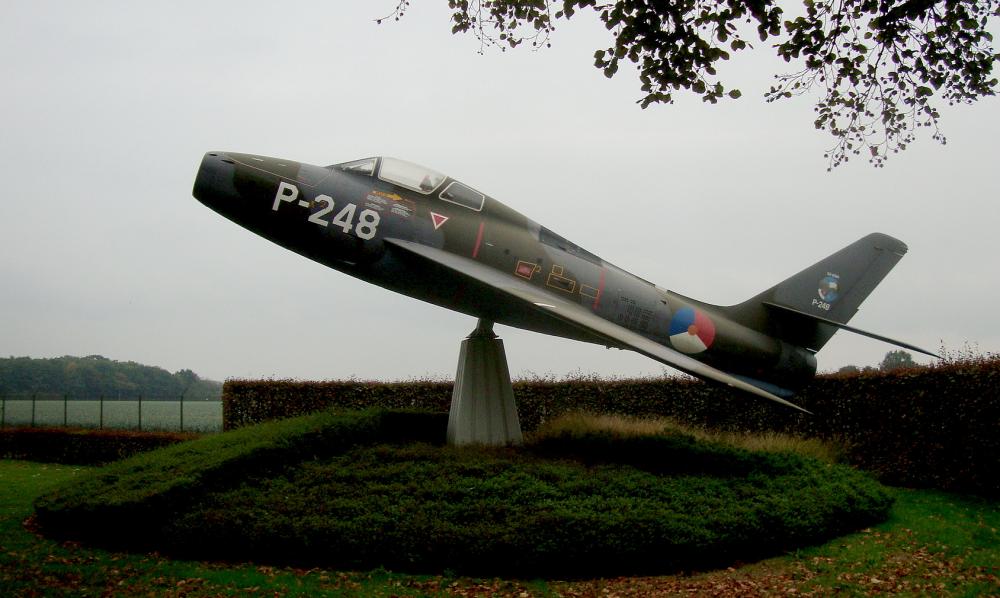|
|
Republic
The Republic Aviation Corporation was an American aircraft manufacturer based in Farmingdale on Long Island, New York. Originally known as the Seversky Aircraft Company, the company was responsible for the design and production of many important military aircraft, including its most famous products: World War II's P-47 Thunderbolt fighter, the F-84 Thunderjet and F-105 Thunderchief jet fighters, as well as the A-10 Thunderbolt II close-support aircraft.
The Seversky Aircraft Company was founded in 1931 by Alexander de Seversky, a Russian expatriate and veteran World War I pilot who had lost a leg in the war. In the beginning, many of Seversky Aircraft's designers were Russian and Georgian engineers, including Michael Gregor and Alexander Kartveli, who would go on to design many of Republic's most famous aircraft.
After several failed attempts, Seversky Aircraft finally won a design competition for a new United States Army Air Corps fighter, and was awarded its first military contract in 1936 for the production of its Seversky P-35.
In 1939, Seversky Aircraft again entered in a military fighter competition, this time with the much-improved AP-4. While the contract was awarded to the Curtiss P-40, the USAAC was impressed with the high-altitude performance of the AP-4 and ordered 13 additional aircraft for testing, as the XP-43.
By April 1939, the Seversky Aircraft Corporation had lost $550,000, and Seversky was forced out of the company he had founded. The board, led by financier Paul Moore, voted W. Wallace Kellett to replace him as president, and in September 1939 the company was reorganized as the Republic Aviation Corporation. Seversky continued to fight for his company, and the matter was not resolved to his satisfaction until September 1942.
Meanwhile, Seversky's AP-4 continued in development, finally going into production as the P-43 Lancer. 272 P-43s were eventually produced, with 108 of them being sent to China to be used against the Japanese. Many passed through the hands of the AVG Flying Tigers, whose pilots were pleased with the plane's performance at altitudes up to 30,000 ft (9,100 m), while their P-40s were ineffective at altitudes over 20,000 ft (6,100 m). Perhaps Claire Chennault disliked the early P-43's lack of self-sealing fuel tanks and armor. He declined to retain the plane for his crews.
In 1939, both Republic and Curtiss participated in an Army competition to develop a lightweight interceptor. Curtiss submitted a lightweight version of the P-40 designated the XP-46 while Republic submitted a similar design designated the XP-47. Both designs were based on a lightweight aircraft built around an Allison V-1710 V-12 engine, with the Republic design using a turbosupercharger. In the end, neither design showed a significant improvement over the P-40, and neither was produced.
Further development of the P-43 continued in the form of a lightweight version using a Pratt & Whitney R-2180 radial engine. The resulting aircraft was known as the XP-44. When the R-2180 did not produce the expected horsepower, Republic switched to the Wright R-2600. Despite possessing 1,600 horsepower (1,200 kW), this engine could not be turbo-supercharged and Republic finally modified the design again, this time to accommodate the enormous Pratt & Whitney R-2800 Double Wasp engine, which produced 1,850 horsepower (1,380 kW). The resulting aircraft, now known as the P-44, was truly impressive. Capable of speeds of 404 mph (650 km/h) at 20,000 ft (6,100 m), and a climb rate of 4,000 ft (1,200 m) per minute, the aircraft would have been an exceptional interceptor. Unfortunately, the aircraft was capable of carrying no more fuel than the P-43, and the Double Wasp engine was far more thirsty, significantly limiting the aircraft's range.
As the air war in Europe progressed, the Army was discovering that what it really needed was a long-range fighter capable of escorting bombers into Germany. Alexander Kartveli was called to the Army's Experimental Aircraft division and told of the new requirements, and that the P-44 would not be ordered in its current configuration. This was a devastating setback for Kartveli and Republic Aircraft because Kartveli knew the XP-44 could not be redesigned to meet these new requirements. On the train back to New York City, he began sketching a new design. This aircraft would become the P-47 Thunderbolt.
In December 1957, Republic developed a helicopter division, building the French Aérospatiale Alouette II helicopter under license, with marginal sales success.
In an effort to keep the company going, Republic proposed converting a wartime-developed four-engine reconnaissance aircraft (the XF-12 Rainbow) into a transport aircraft. The aircraft would be very fast for a prop plane, but interest from airlines was not sufficient to continue development of the aircraft and the project was cancelled.
Republic Aviation made one last attempt to survive by returning to military contracts. In 1960, Republic Aviation acquired a minority interest in the Dutch aircraft company Fokker, and attempted to market a Fokker-designed attack plane (D-24 Alliance variable sweep wing VTOL) to the Air Force, but the Air Force showed little interest in the foreign design and no contracts were offered.
In the early 1960s, the aerospace company Fairchild, owned by Sherman Fairchild, began purchasing Republic's stock and finally acquired Republic Aviation in July 1965. In September, Republic became the Republic Aviation Division of Fairchild Hiller and ceased to exist as an independent company.
Republic F-84F Thunderstreak
In 1946, Republic again turned its attention to military contracts, developing a single-engine jet fighter to meet an Army requirement for a fighter with a top speed of 600 mph (970 km/h). The first YP-84A Thunderjet flew on February 28, 1946, but the aircraft was plagued with so many developmental problems that the first F-84B didn't enter Air Force service until 1949. The straight-wing F-84D would go on to become an important aircraft during the Korean War, flying 86,408 missions. In 1949, a swept-wing version, the F-84F Thunderstreak, was developed but additional development and engine problems resulted in the aircraft not entering service until 1954. A photo-reconnaissance version known as the RF-84F Thunderflash was developed from the F-84F, and 715 were produced. The final straight-wing version, known as the F-84G, was a holdover design for Republic while the J-65 engine for the swept wing F-84F was still being developed. The F-84F would continue in service with Air National Guard units until 1971, when corrosion forced them to be withdrawn from U.S. service. The F-84F and RF-84F were both used by several foreign operators including Germany, The Netherlands, Belgium, France, Italy, Greece, Turkey, and Denmark. The F-84F continued to serve in European air forces until the 1980s.


Republic F-84F Thunderstreak, registration P-248, built 1953, serial number 53-6584
Volkel, Netherlands, 24 September 2022
|

